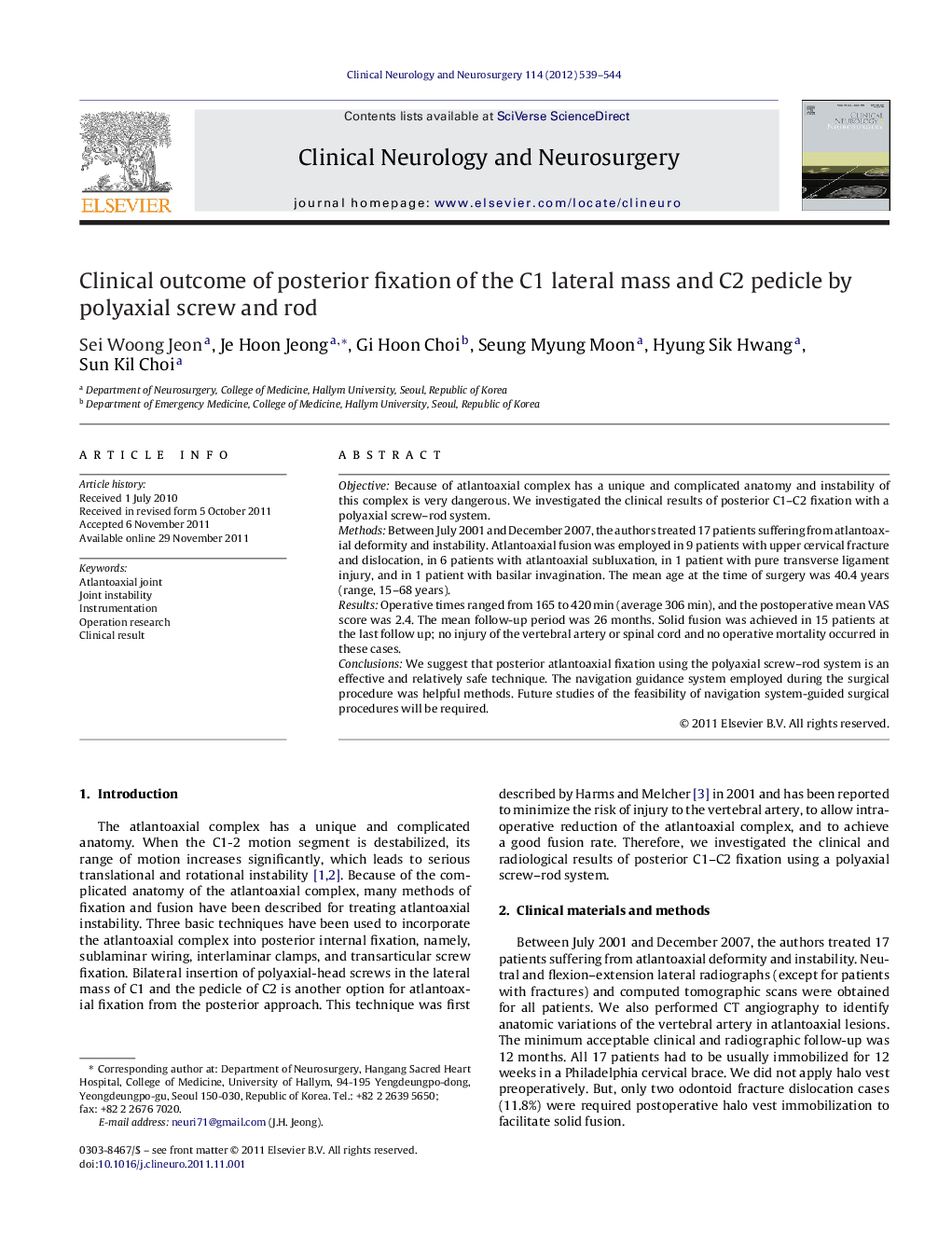| Article ID | Journal | Published Year | Pages | File Type |
|---|---|---|---|---|
| 3040798 | Clinical Neurology and Neurosurgery | 2012 | 6 Pages |
ObjectiveBecause of atlantoaxial complex has a unique and complicated anatomy and instability of this complex is very dangerous. We investigated the clinical results of posterior C1–C2 fixation with a polyaxial screw–rod system.MethodsBetween July 2001 and December 2007, the authors treated 17 patients suffering from atlantoaxial deformity and instability. Atlantoaxial fusion was employed in 9 patients with upper cervical fracture and dislocation, in 6 patients with atlantoaxial subluxation, in 1 patient with pure transverse ligament injury, and in 1 patient with basilar invagination. The mean age at the time of surgery was 40.4 years (range, 15–68 years).ResultsOperative times ranged from 165 to 420 min (average 306 min), and the postoperative mean VAS score was 2.4. The mean follow-up period was 26 months. Solid fusion was achieved in 15 patients at the last follow up; no injury of the vertebral artery or spinal cord and no operative mortality occurred in these cases.ConclusionsWe suggest that posterior atlantoaxial fixation using the polyaxial screw–rod system is an effective and relatively safe technique. The navigation guidance system employed during the surgical procedure was helpful methods. Future studies of the feasibility of navigation system-guided surgical procedures will be required.
